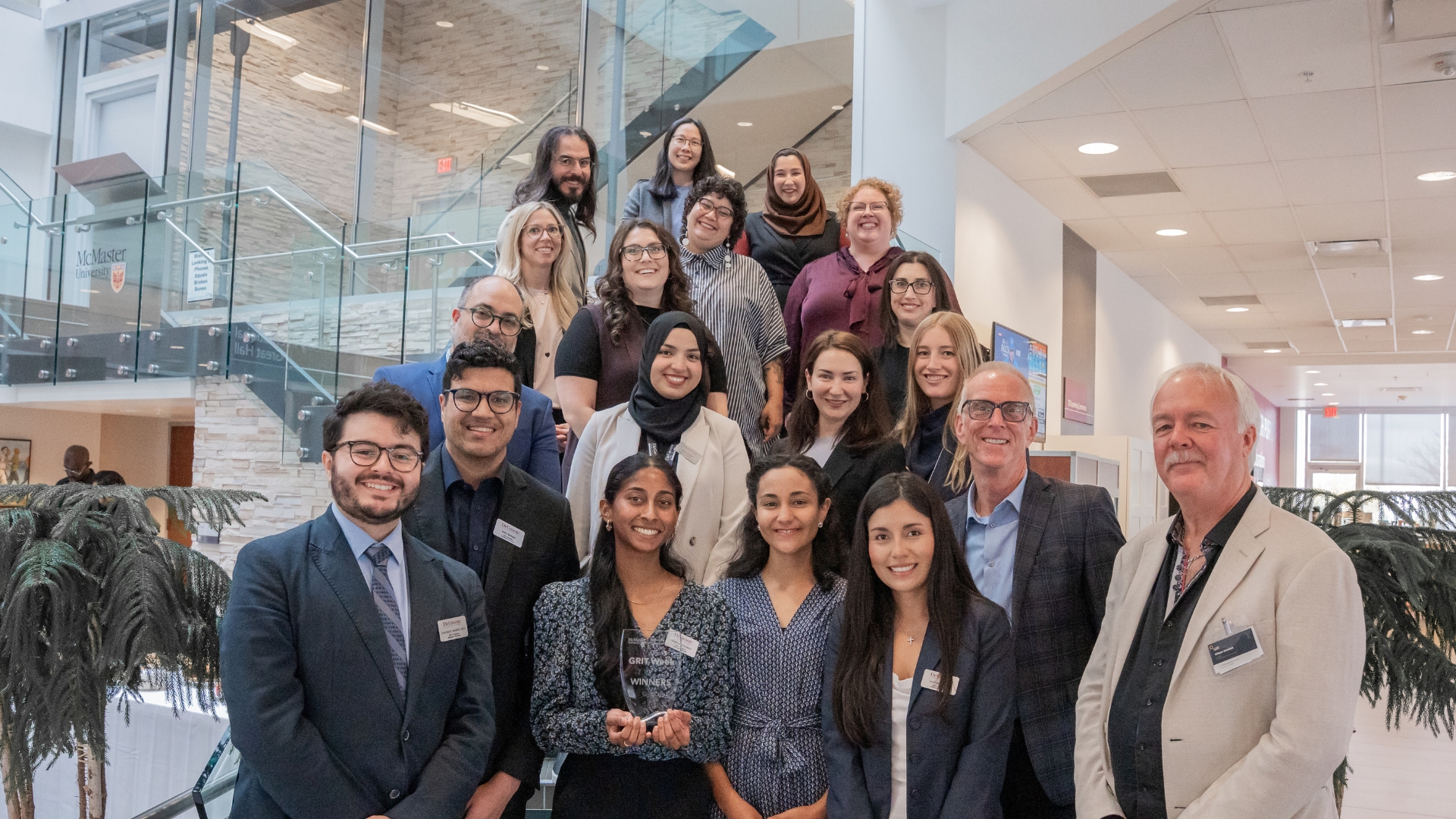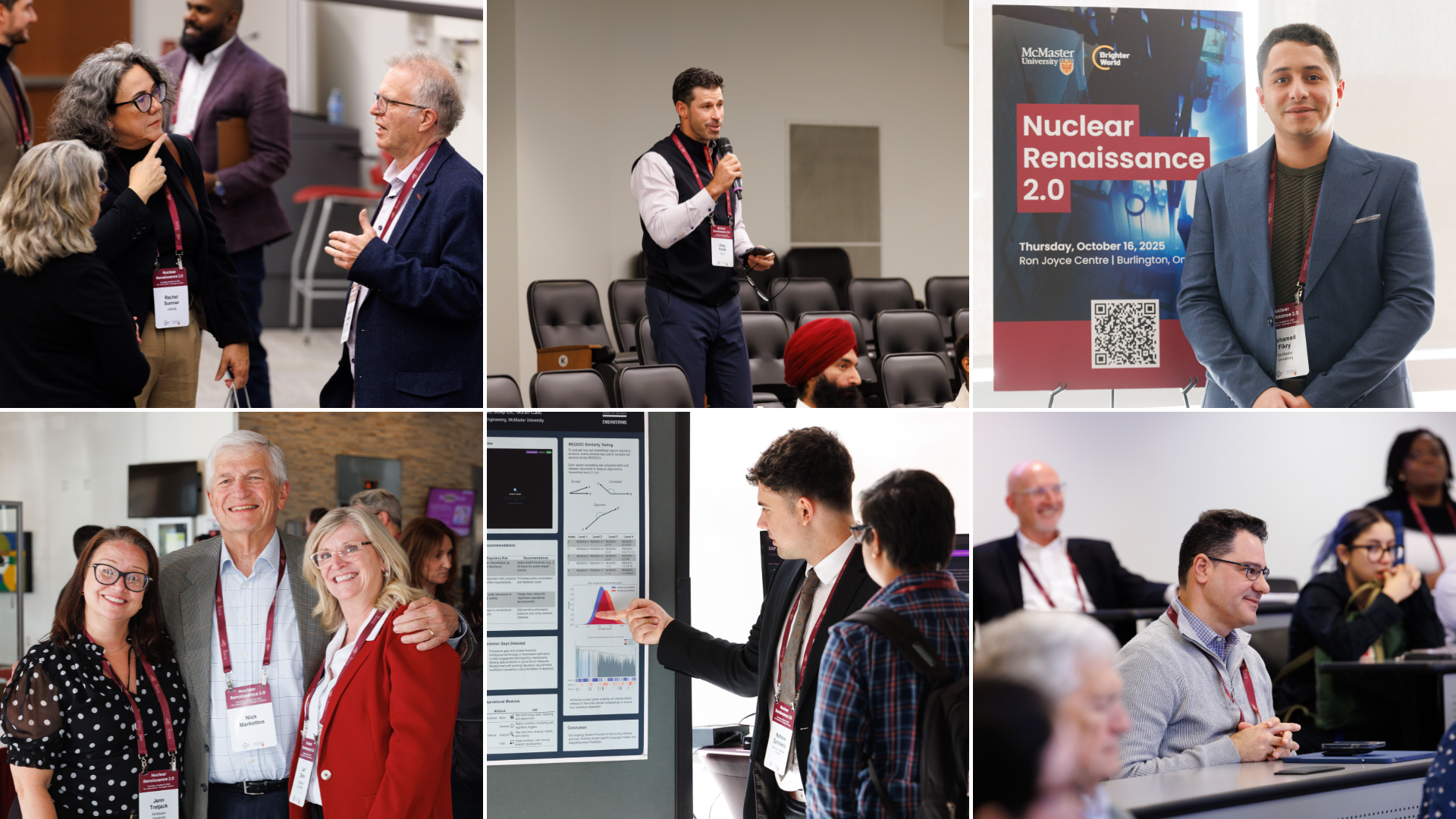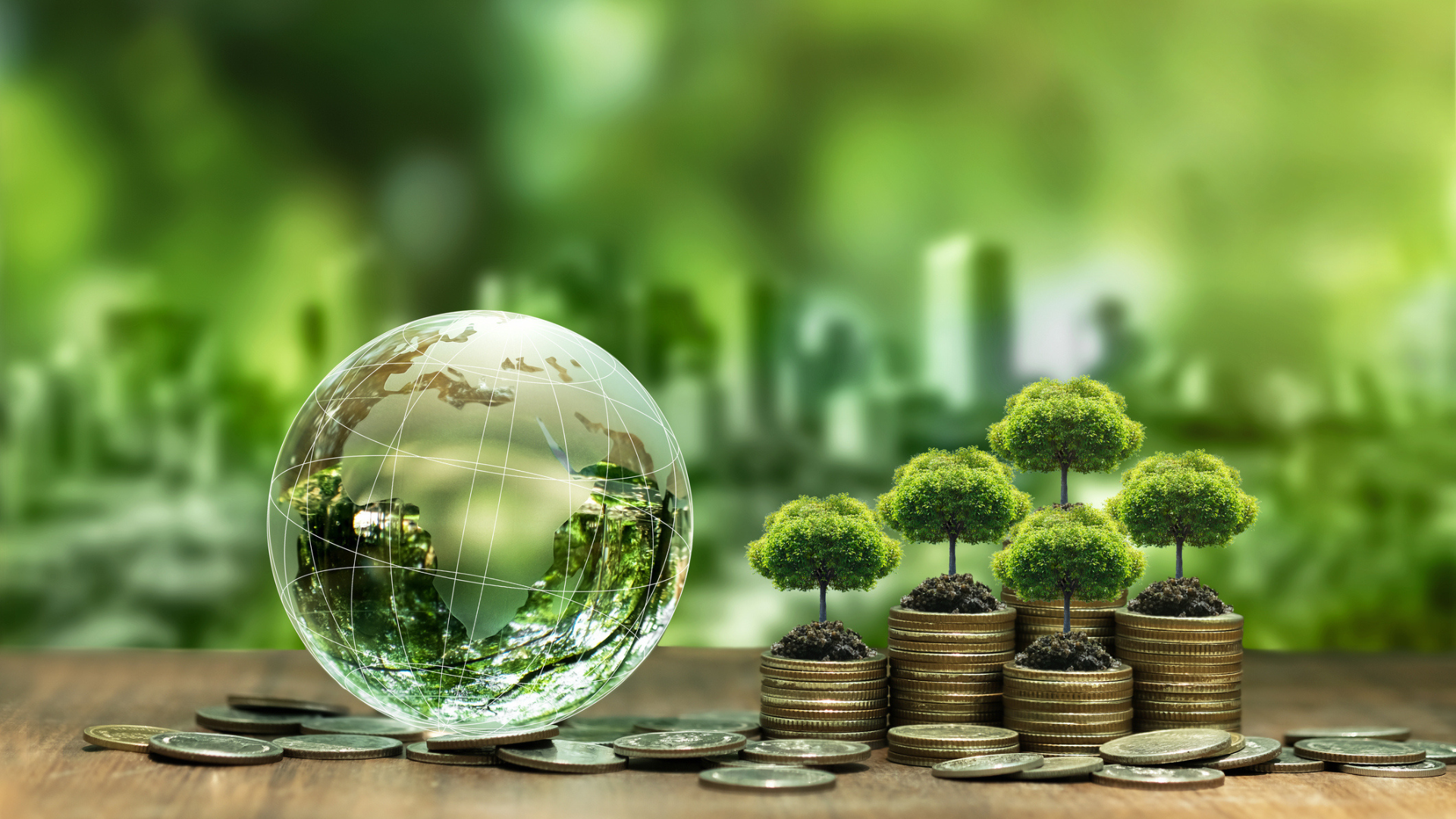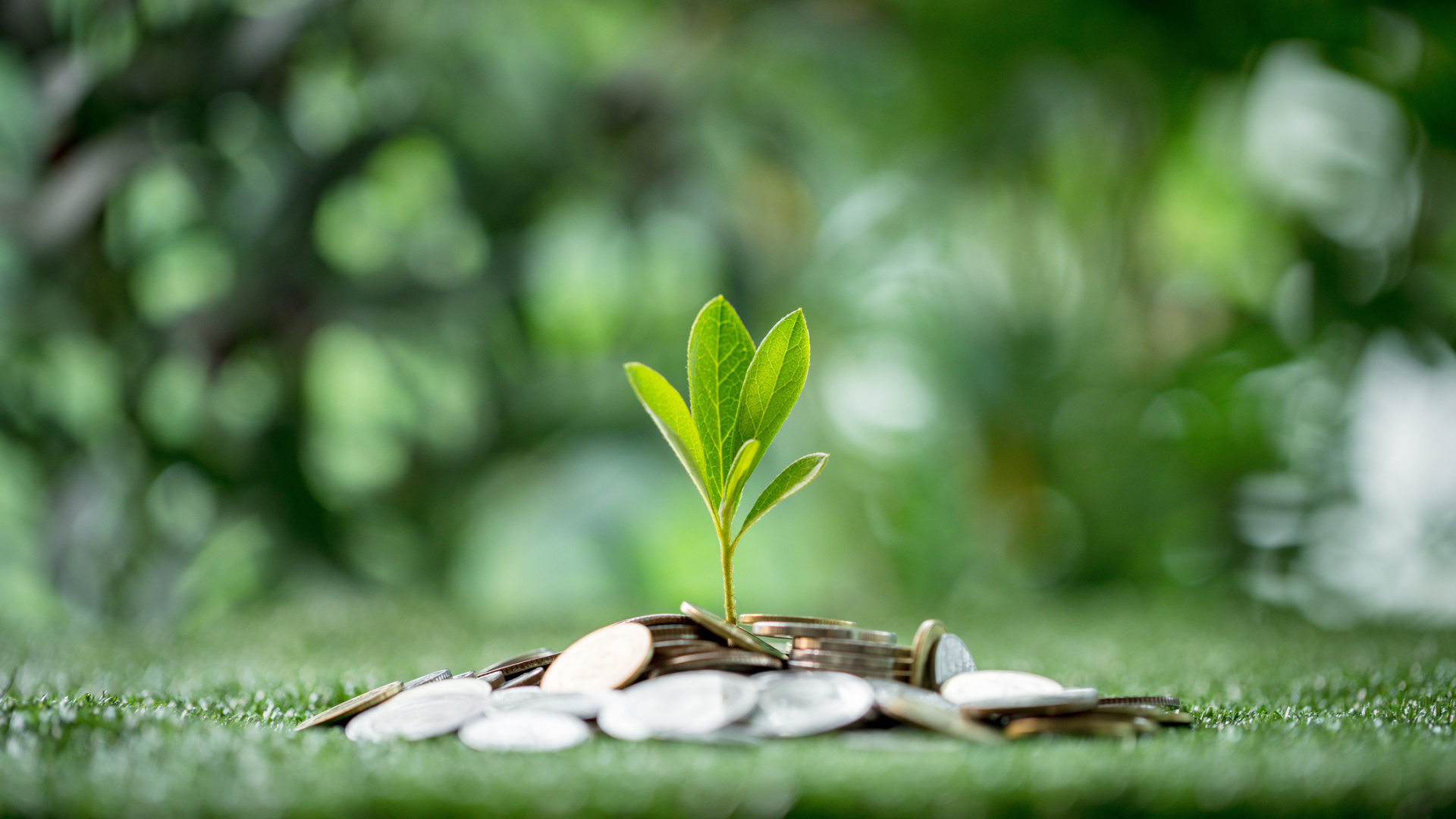ALUMNI SOCIETAL IMPACT STRATEGIC PLAN | ENGAGING COMMUNITIES
Creating a net-zero roadmap
November 27, 2024 ·
Contributed by: Izabela Shubair, DeGroote Contributor

The United Nations has called climate change the defining crisis of our time. The organization highlights numerous climate change-related security concerns, including the effects on food, water and energy supplies, increased natural resource competition, job loss, natural disasters and forced migration. Canada is not exempt.
The Canadian Institute for Climate Choices estimates that the average cost per disaster in Canada has increased more than tenfold since the 1970s. In 2021, the western provinces experienced significant drought, contributing to a $1.1 billion increase in crop insurance payments in 2022. Many coastal communities, meanwhile, face the risk of tidal flooding and storm surges, while some face irreversible effects of sea level rise. Extreme heat events also caused a two to eight per cent higher daily mortality rate risk than average in 12 large Canadian cities from 2000 to 2022.
Discussions about tackling these challenges often overlook an essential factor: finance.
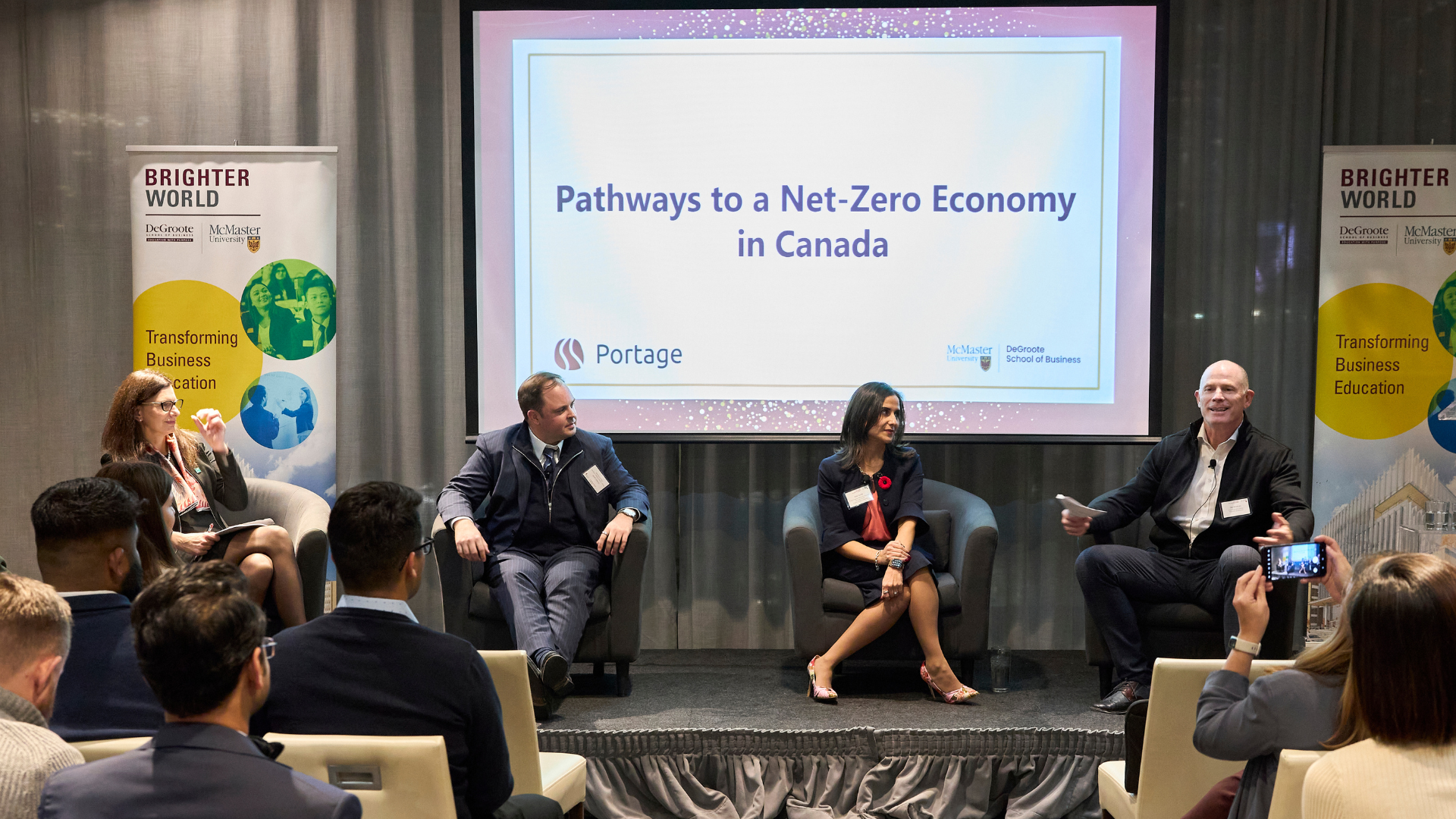
In November, the DeGroote School of Business hosted a panel of experts, including two alumni, to discuss Canada’s sustainable economy. Conversations focused on the role of four main sectors — oil and gas, transportation, electricity and banking and finance — in achieving a net-zero economy.
Adam Felesky, co-founder and CEO of Portage Ventures, supported the event, which Dan Wicklum, the CEO of the Transition Accelerator, moderated.
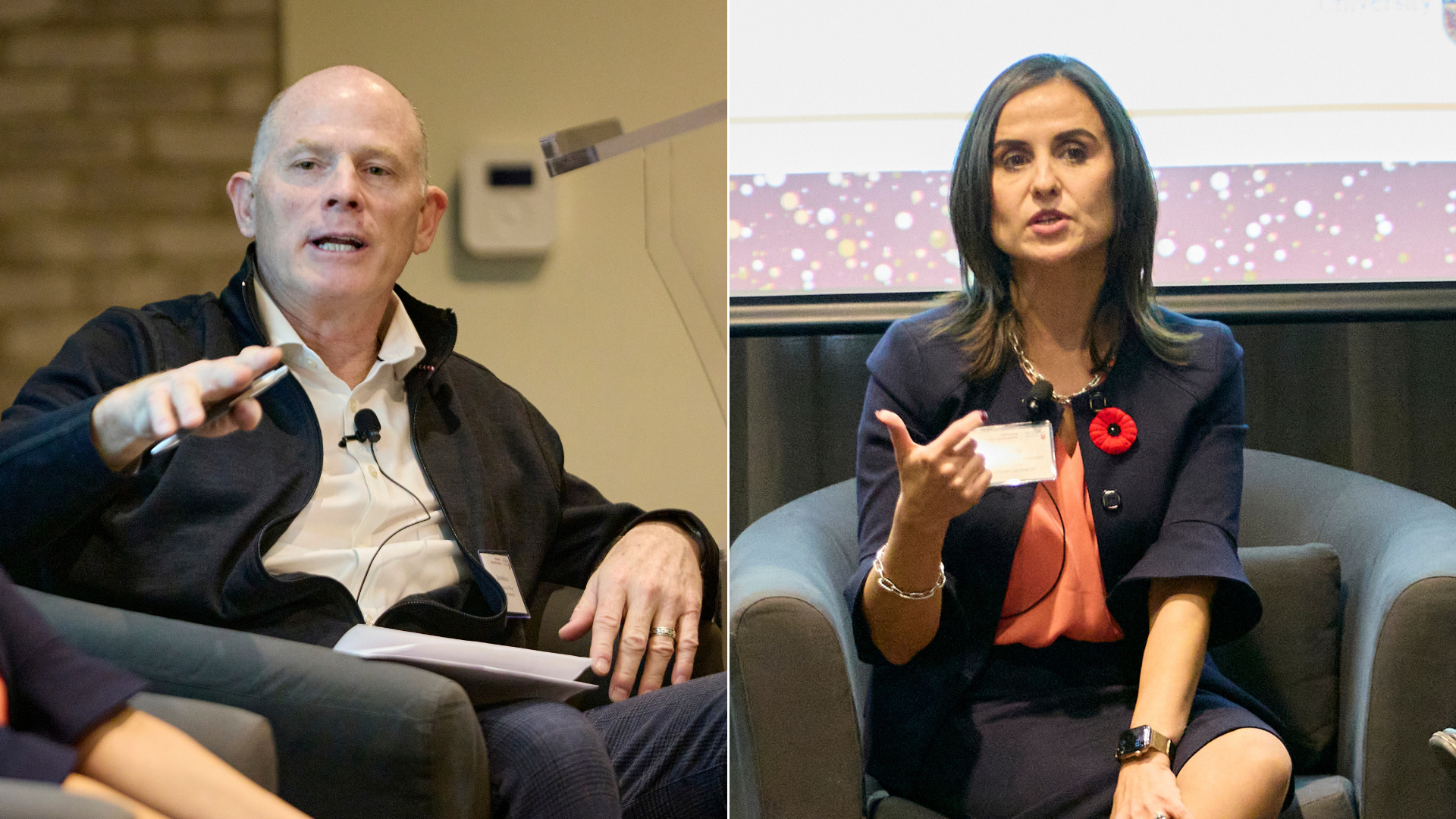
Moderator Dan Wicklum, CEO of the Transition Accelerator, and Aida Cipolla (BCom ’03), CFO of Ontario Power Generation.
“The stakes have never been higher, the risks have never been clearer,” said Wicklum, whose organization works with national partners to achieve a net-zero economy in Canada by 2050. “How do we make progress? It’s about implementation, and implementation really means money.”
Key themes that emerged during the panel discussion featuring Ontario Power Generation CFO Aida Cipolla (BCom ’03), Sonja Volpe (MBA ’01), CEO of BNP Paribas Canada and Connor Lyons, a partner at Power Sustainable, included rethinking the government’s role, the power of partnerships and a global perspective.
“An interdisciplinary approach to tackle problems of this nature is crucial,” said Lyons. “It’s not just finance, and it’s not just government. It’s really a cross-sector approach to solving this problem, which is systemic, long-term and requires values to be brought to the discussion.”
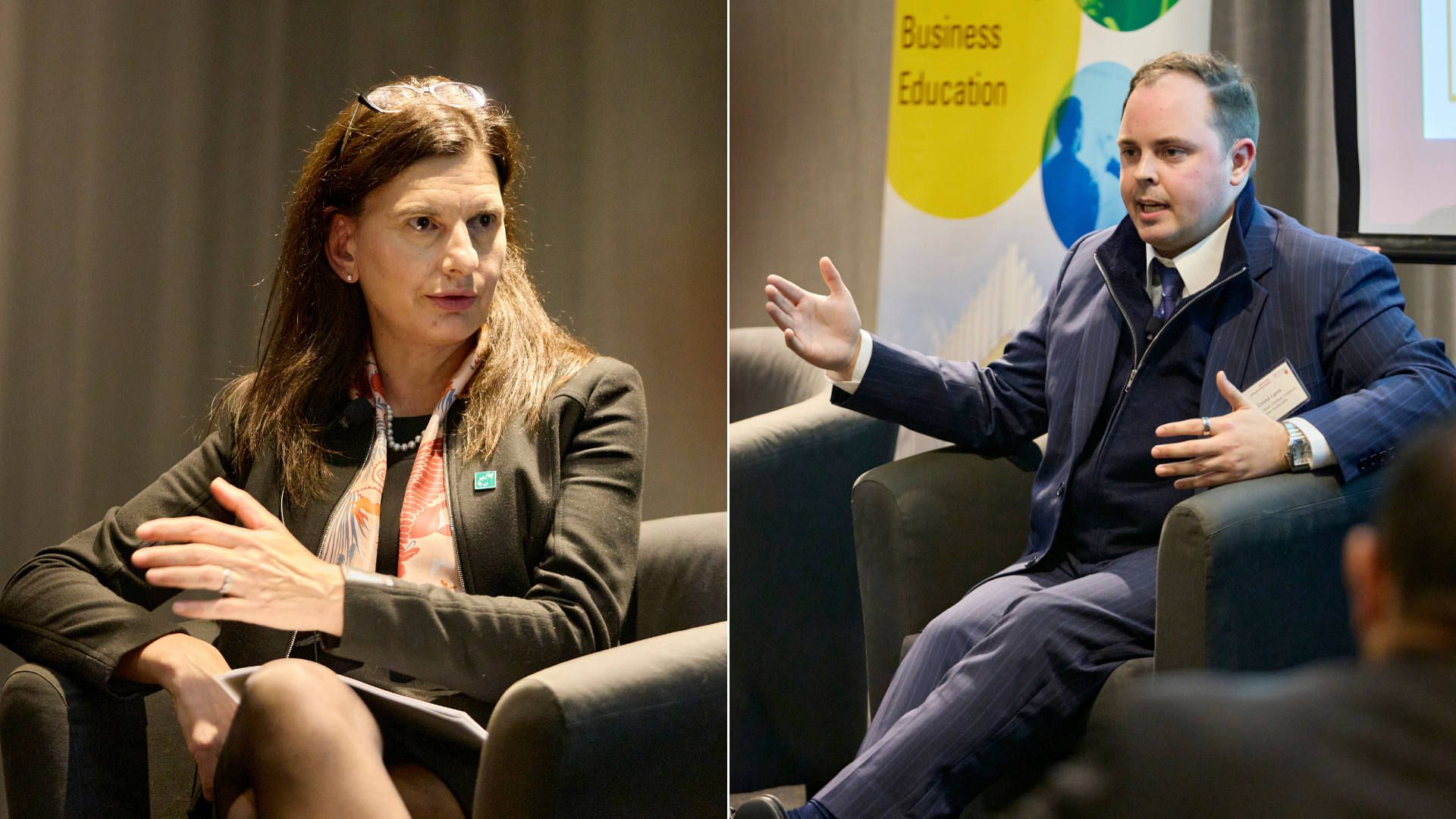
Sonja Volpe (MBA ’01), CEO of BNP Paribas Canada and Connor Lyons, a partner at Power Sustainable.
The changing role of government and importance of partnerships
Canada’s prior emphasis on emissions reduction over elimination led the private sector to rely on the Ministry of Environment and Climate Change for incentives, according to Wicklum. With a shift towards zero emissions, corporations now see this approach as unfeasible, underscoring the need for broader political support.
Speaking specifically to the energy sector, Cipolla stressed the necessity of engaging institutional investors and government in initiatives, advocating for bold government actions to reassure investors. One notable step was Canada becoming the first sovereign borrower to finance specific nuclear projects through green bonds, which support environmentally beneficial initiatives.

During the Insight Lecture guests had an opportunity to network and discuss sustainable finance in their sector. Pictured above from left to right: Ian Nakamoto and DeGroote assistant professor Rui Duan, and Elisabeth Laratta.
“We have to lead differently so investors can get confidence in what this is,” she said. “It is so important right now to have strategies around that because I think you have dollars to deploy, but they need to be deployed into the right renewable projects.”
She later added, “The future of our economy is going to be about partnerships. Partnering with a bank, an investor, government, Indigenous communities, universities.”
BNP Paribas Canada’s Volpe shared that money is flowing into net-zero projects worldwide. In 2023, for example, renewable energy capacity added to energy systems increased by 50 per cent globally. Solar and wind are on track to become the cheapest source of new electricity generation in the U.S. by 2025. And in Europe, by 2030, about 100 cities want to be net zero.
Closer to home, Climate Engagement Canada is a group of 48 Canadian investors who manage over $4 trillion in assets. In Ontario, $50 billion of public money was invested in new supply chains for electric vehicles and the nuclear sector is looking to more than double its 90,000-person workforce.
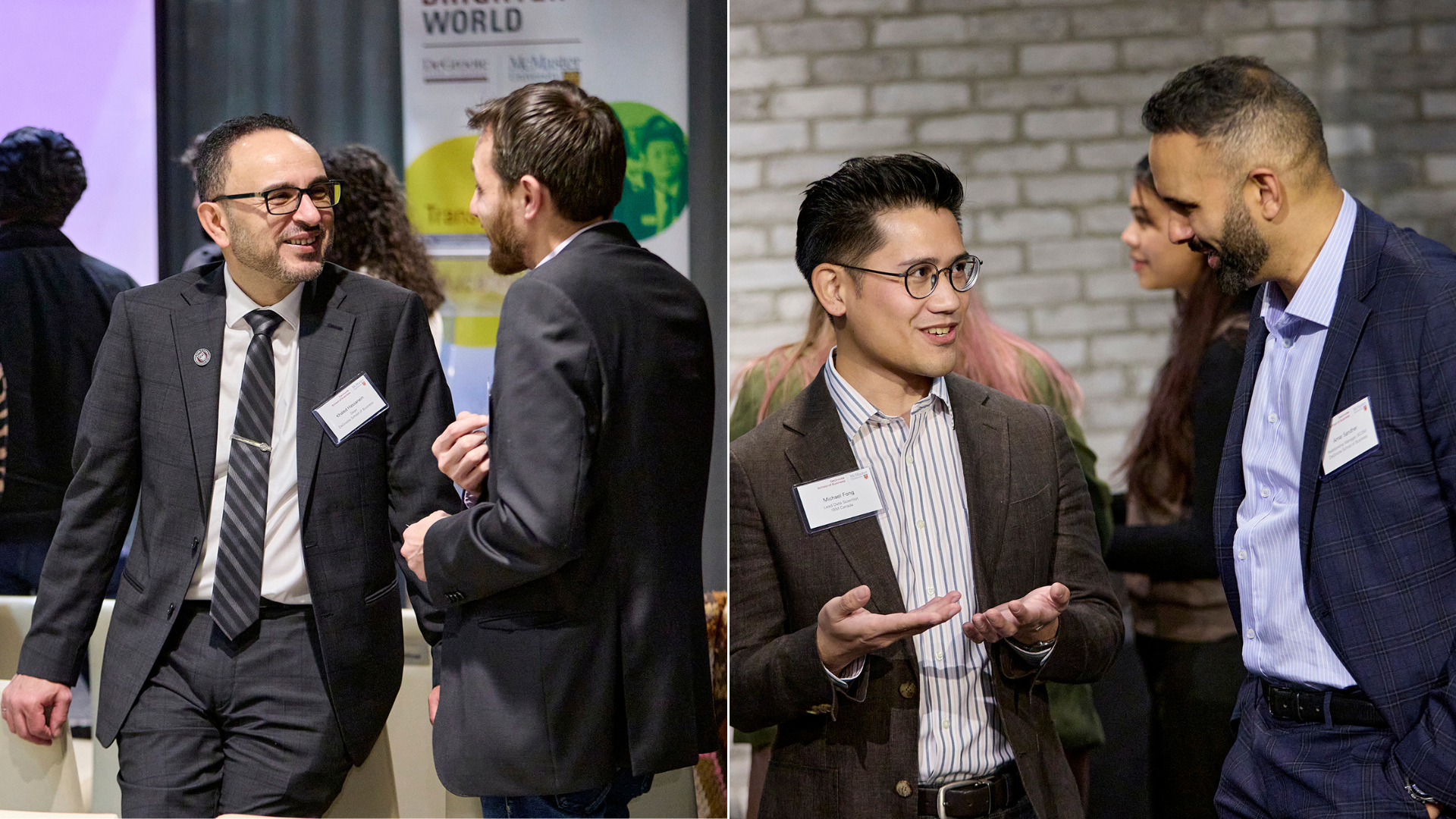
Pictured above from left to right: DeGroote School of Business Dean Khaled Hassanein speaks with Nabil Agha, and Michael Fong speaks with DeGroote’s Career Development & Relationship Manager Amar Sandher.
“It’s a combination from government through the different support incentives, but also from institutional investors and banks financing viable projects,” said Volpe. “I think as long as we’re able to bring all the right stakeholders to the table to have the tough and the easier conversations, money will flow in.”
In his sector, Lyons believes we are seeing the beginning of a shift in investment allocation, primarily led by sovereign wealth funds, insurance companies and pension funds. For example, America’s largest pension, the California Public Employees’ Retirement System, is investing $100 billion in climate solutions by 2030.
“They see the dislocation that’s happening as a consequence of all this change that’s being driven in some ways by investments that China’s making and the regulatory environment in Europe, which is addressing national security considerations,” he said. “All of that fundamentally changes how the world works and who the winners and the losers are. Within that dislocation, while it’s a lot of change, it creates opportunity.”

Looking outwards
Because this transition at the global scale is going to happen with or without Canada, it’s crucial to look outwards. Cipolla mentioned that as Canada sees Europe making it easier to finance the energy transition, it doesn’t have to wait for the government to step in but can benefit by capitalizing on job creation. Volpe added that the global energy market appeals to international organizations, which can open various financing options for Canada.
“Whether institutional investors or banks, we’re going to ask where are the big projects, where is it viable, where is it going to get done? And that’s where money will be flowing,” Volpe summed up.
“So, it’s going to be incredibly important for Canada to continue to provide that overall framework despite all of the complexities and the fact that we don’t have everything figured out. That money will flow in because, you know what, it’s not the first time that we’re going through this sort of magnitude of change. This time, it’s called net-zero.”

Local Net-Zero Facts and Figures by Sector
Here’s a look at some of the ways Canada is working towards a sustainable future.
Oil and Gas
• Greenhouse gas (GHG) emissions per barrel of oil produced in the oil sands have fallen 36 per cent since 2000.
• While Ontario, for example, will open another natural gas plant, it is actually needed on the road to net-zero. “As you build renewables, we need to have natural gas … so that we can get to the renewable part,” said Aida Cipolla during the panel discussion.
Transportation
• Hydrogen may be used in transportation. Two hydrogen bus pilot projects are being developed in Brampton and Mississauga.
• The federal government is providing $2.4 billion to help public transit and school bus operators purchase 5,000 zero-emission buses and build charging infrastructure.
• In 2023, electric vehicle registrations made up 10.8 per cent of total vehicle registrations in Canada. Over 184,000 plug-in EVs were registered in 2023, more than nine times the number of registrations in 2017.
Energy
• Seventy per cent of Canada’s electricity comes from renewable sources and 82 per cent from non-greenhouse gas emitting sources such as solar, hydro, wind and nuclear power.
• Canada is the world’s third-largest producer of hydroelectricity.
Finance
• Organizations such as Canada Infrastructure Bank and Canada Growth Fund work to entice private capital to invest in various clean, renewable projects.
• Since March 2022, Canada has issued green bonds to mobilize capital to support its climate and environmental objectives.
• The federal government has announced a plan to deliver a taxonomy, a set of guidelines for green and transition investments. When completed, it is expected to drive significant amounts of Canadian and foreign capital to fight climate change.
Learn more at the Canadian Centre for Energy Information’s Energy Fact Book and on Canada’s Climate Change Adaption Platform.





